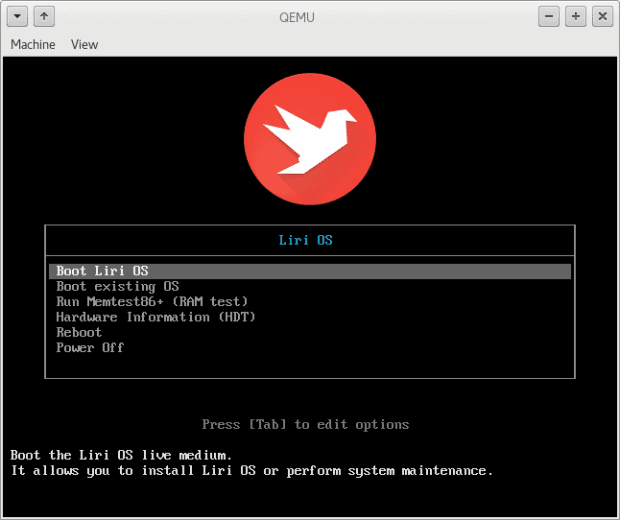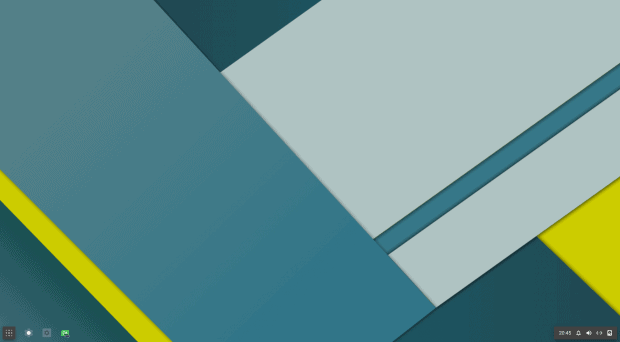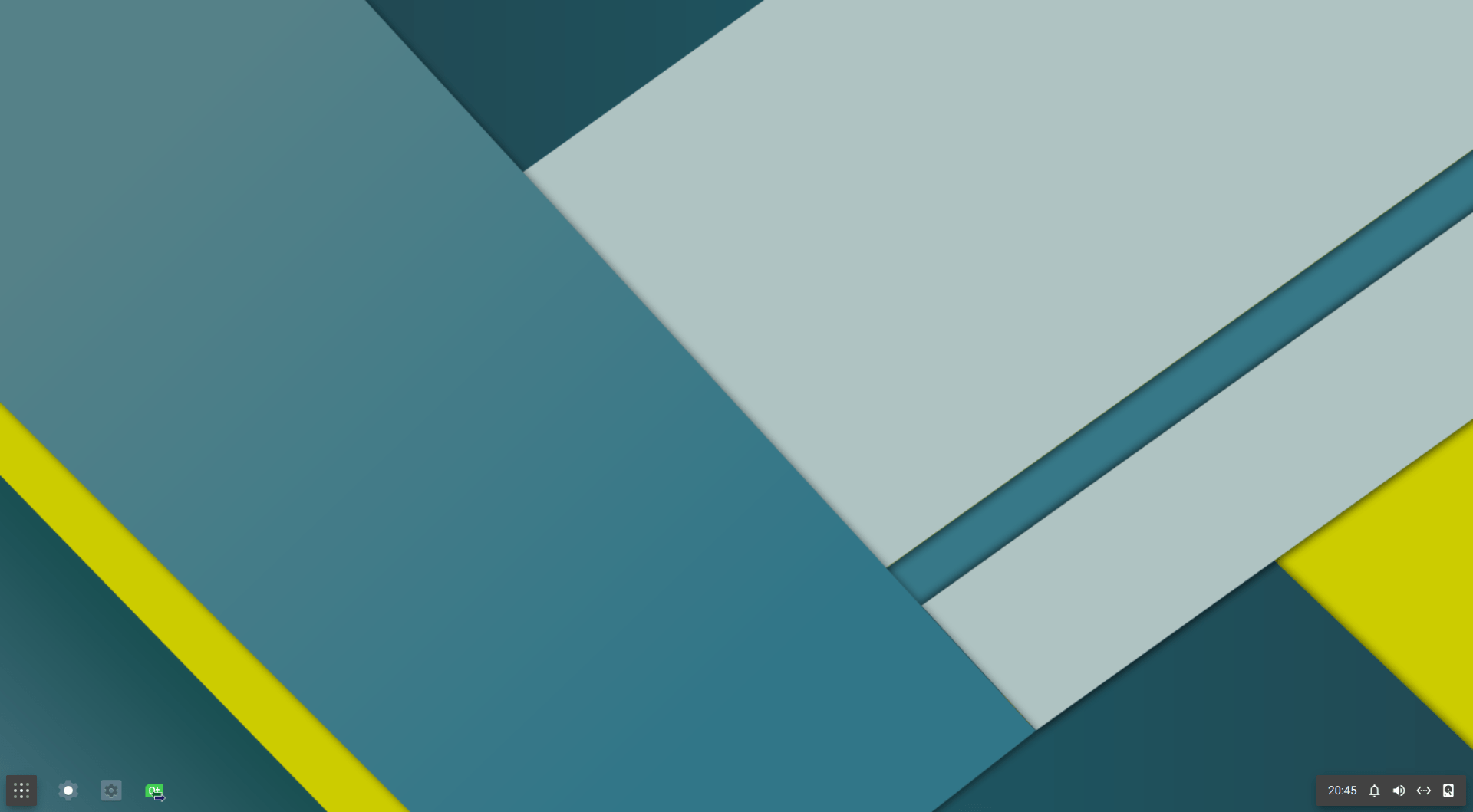What does the world of Linux need more? Desktop environments? Nope. Ah, well, you’d be surprised, because a fresh new challenger appears! Its name is Liri, and it is the presentation layer for the namesake operating system being baked in the forges of community creativity as we speak. Sounds potentially interesting, but then we must be wary.
I’ve trawled through the obscure, uncharted waters of Budgie, Razor-Qt and more recently, and with much greater attention to detail, LXQt, and in all of these cases, I was left rather dissatisfied with the end product. Not enough cohesion, quality, future roadmap, and most importantly, the finesse that you expect from polished, professional products. Then again, building a desktop environment is a huge undertaking, probably even more complex than spinning a new distro, and so, it’s not a coincidence that there are few serious contenders in this space. But Liri comes with enticing artwork, a promise of Material Design for the desktop, and so here we are, trying to get the first feel of what it does.
Let it boot, let it boot, let it boot
Ah well. Not so simple, I must say. For three days and three nights, I worked relentlessly, trying to get Liri to perform its magic for me. I shall endeavor to enlighten you on my journey. My first attempt was to boot from live CD using the nightly build – strangely, you don’t really get them nightly, more like once a week or so, and I guess the dev and testing teams are overstretched.
I tried the Alpha nightly on my LG RD510 laptop, and sure thing, it booted, and I even got into a very pleasant desktop. Only I had no mouse control. Or rather, the mouse was working, but there was no cursor anywhere. I could see the cursor hitting screen corners, those are relatively easy to find when navigating blindly with the mouse, and I even managed to open the system menu, use some shortcuts and type a few innocent words slash commands here and there. The performance was slow, the menu does not respond to any known shortcut, and working in a graphical interface without a mouse on a non-touch monitor is tricky.
I decided to expand my testing to virtual machines – VirtualBox, VMware Player and KVM. The first does not work, because it does not support Wayland just yet. I’d get the login screen, the splash, and so it goes in cycles. No luck there.
Both VMware Player and KVM booted LiriOS fine, to a point. With VMware Player, I had a huge virtual machine, overflowing the size of my desktop, even though I had set the guest resolution to a fixed value, which LiriOS did not accept for some odd reason. No desktop elements and no mouse, either. Just a blank screen. KVM, more luck, I had the same visual as the laptop testing, but still no mouse. The would-be instructions for doing are also somewhat shoddy. If you copy-paste the instruction command for qemu-kvm, you won’t be able to boot – the wrong memory size value is used – should be G instead of GB.
qemu-system-x86_64 -enable-kvm -m 2GB -vga qxl -net user,hostfwd=tcp::10022-:22 -net nic -cdrom lirios-2017.06.03.iso qemu-system-x86_64: -m 2GB: Parameter 'size' expects a non-negative number below 2^64 Optional suffix k, M, G, T, P or E means kilo-, mega-, giga-, tera-, peta- and exabytes, respectively.
Manjaro (Arch) testing
My last attempt to get going was to setup an Arch repo in Manjaro on my Lenovo G50 machine and actually test this proper, fully aware of the risk of running such an early build on a laptop with sixteen partitions and multiple operating systems. I tried installing all of the available packages, but it turns out that liri-player-git isn’t there.
sudo pacman -S liri-shell-git liri-browser-git liri-files-git liri-player-git liri-settings-git liri-terminal-git error: target not found: liri-player-git
And then, there’s a dependency issue, too:
sudo pacman -S liri-shell-git liri-browser-git liri-files-git liri-settings-git liri-terminal-git resolving dependencies... :: There are 2 providers available for phonon-qt5-backend: :: Repository extra 1) phonon-qt5-gstreamer 2) phonon-qt5-vlc Enter a number (default=1): looking for conflicting packages... warning: dependency cycle detected: warning: phonon-qt5-gstreamer will be installed before its phonon-qt5 dependency
I also setup sddm, to be able to switch to Liri on login, in addition to being able to run it directly from a virtual console. In both cases, I got to the desktop environment with a few sexy, enticing icons, but no mouse, and therefore, it was completely useless. Not even Ctrl + Alt + Delete worked. Nor any of the visual consoles. I could only restart the X – even though it’s Wayland – or hard boot. Lastly, there were a few other issues, like running Liri directly with Wayland as the target platform:
liri-session -platform wayland Failed to create display (no such file or directory)
In the end, I never got to see this (official screenshot):
Conclusion
I feel like Saint Cyril and Methodius, inventing a whole new alphabet, because Alpha sure does not cut it, and we need some odd letter that precedes it. Some kind of a label that marks a software product so unstable that it isn’t even ready for early adopters and tinkerers. It sure does not bode well for the desktop environment, then again, most people will never ever encounter something like this so early. And yet, with such a polished official website, a bold statement and sexy screenshots, I expect more.
I wanted to experience Qt wedded to Material Design, I wanted to see if there’s future and merit in this concept, and maybe one day there will be, but the elevator speech turned out to be a free fall, and it does raise the question of validity of this and similar efforts. Is there really room, apart from personal fun and games for those involved, in starting such a tremendous effort. I struggle to see, and I wish to be surprised and proven wrong, how Liri, or any other small desktop environment ever has hope of making it big with limited resources and less than a razor-sharp mission statement.
That’s it. Is Liri good? I have no idea. And that is not good. For now, it’s a bunch of shiny Googlesque images, and perhaps one day, I will be able to see how serious and advanced this effort is. At the moment, it’s not even ready for the basics, and after three days, the best I can do is this little review. See you around.
[sharedaddy]





“…and we need some odd letter that precedes it. Some kind of a label that
marks a software product so unstable that it isn’t even ready for early
adopters and tinkerers…”
How about “?”?
That’s not a “u”, that’s the Greek lower-case symbol for “upsilon”.
It’s Greek, which automatically lends it the pedigree it needs to be used in such an endeavour (Saints Cyril and Methodius would be proud); and it’s visually close enough to (lower-case) “U” to be pressed into service as meaning “unusable”, an ever-so-slight–but much more accurate–change to the word “unstable”. A thousand pardons.